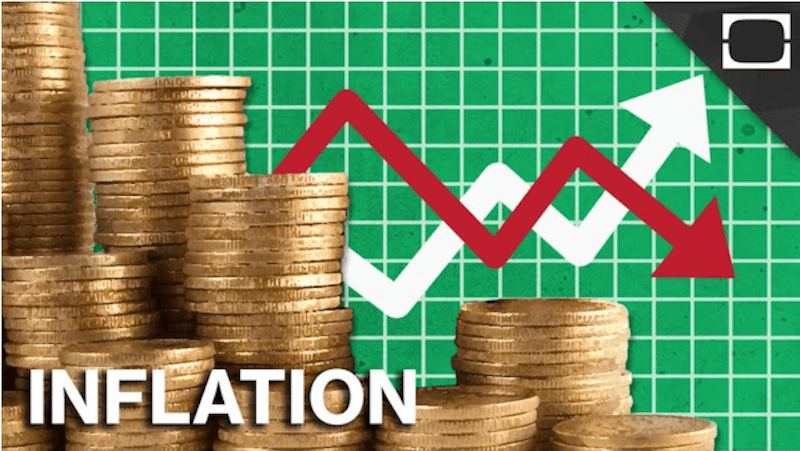•Rising food, commodities, energy prices responsible for surge in CPI
•Food index hits 40.01%, severe in Kogi, Bauchi, Kwara, others
James Emejo in Abuja and Nume Ekeghe in Lagos
The naira exchange rate against the United States dollar has sustained its rally as it appreciated to a seven-month high to close at N1000/$1 on the parallel market.
On the Nigerian Autonomous Foreign Exchange (NAFEM) official window yesterday, also, the naira extended its upward trend, maintaining its one-month gain as it closed at N1,136.04/$, gaining N6.32, compared to the N1,142.38/$1 it closed on Friday.
The national currency’s appreciation came as the National Bureau of Statistics (NBS) disclosed that the Consumer Price Index (CPI), which measures the rate of change in prices of goods and commodities, further increased to 33.20 per cent in March 2024, compared to 31.70 per cent in February.
The appreciation recorded by the naira against the greenback on the parallel market marked the first time the naira reached this level since September 26, 2023.
The daily foreign exchange (FX) turnover, however, saw a decline of 10.57 per cent, reaching $251.60 million yesterday, compared to the $281.34 million recorded on Friday. Furthermore, the highest spot rate observed yesterday stood at N1,227, with the lowest spot rate recorded at N1,000
Meanwhile, year-on-year, headline inflation rate was 11.16 per cent higher compared to 22.04 per cent recorded in March 2023.
According to the CPI report for the period under review, food inflation rose to 40.01 per cent year-on-year in March, 15.56 per cent higher than 24.45 per cent recorded in March 2023.
Core inflation, including energy prices increased to 25.90 per cent year on year in March, an increase of 6.26 per cent compared to 19.63 per cent recorded in March 2023.
The statistical agency said the rise in food inflation was attributed to increases in prices of garri, millet, akpu uncooked fermented (which are under the bread and cereals class), yam tuber, water yam (under potatoes, yam, and other tubers class), and dried fish sardine.
Other contributors to the food index included mudfish dried (under fish class), palm oil, vegetable oil (under oil and fat), beef feet, beef head, liver (under meat class), coconut, water melon (under fruit class), lip- ton tea, Bournvita, Milo (under coffee, tea and cocoa class).
Month-on-month, however, food inflation rate decreased in March to 3.62 per cent, which represented 0.17 per cent drop compared to 3.79 per cent I’m February.
NBS stated that the drop in food inflation, month-on-month, was caused by a fall in the rate of increase in the average prices of guinea corn flour, plantain flour (under bread and cereals class), yam, Irish Potatoes, Coco yam (under potatoes, yam and other tubers class), Titus fish, mudfish dried (under fish class), Lipton, Bournvita, Ovaltine (under coffee, tea and cocoa class).
On the other hand, the increase in core inflation was blamed on highest increases in prices of bus journey within the city (under passenger transport by road class), actual and imputed rentals for housing, consultation fee of a medical doctor (under medical services class), and pharmaceutical products, as well as energy, among others.
Month-on-month, core Inflation rose to 2.54 per cent in March from 2.17 per cent in February.
The average 12-month annual inflation rate was 22.26 per cent compared to 17.22 per cent in March 2023.
Similarly, year-on-year, urban inflation rose to 35.18 per cent, compared to 23.07 per cent in March 2023. Month-on-month, the index stood at 3.17 per cent, almost unchanged from February.
Rural inflation rate rose to 31.45 per cent year-on-year in the review period, compared to the 21.09 per cent in March 2023. Month-on-month, the rural index stood at 2.87 per cent compared 3.07 per cent in February.
At state level, the all-Items inflation year-on-year was highest in Kogi (39.97 per cent), Bauchi (38.34 per cent), Kwara (38.10 per cent), and Oyo (37.29 per cent), while Borno (25.78 per cent), Benue/Taraba (28.12 per cent), and Katsina (28.32 per cent) recorded the slowest rise in headline inflation.
Month-on-month, however, inflation was highest in Zamfara (3.90 per cent), Abia (3.89 per cent), Ondo (3.75 per cent), while Borno (1.46 per cent), Yobe (1.84 per cent), and Adamawa (1.85 per cent) recorded the slowest rise.
Food inflation on year-on-year basis was highest in Kogi (48.46 per cent), Kwara (46.18 per cent), Akwa Ibom (45.18 per cent), while Nasarawa (33.76 per cent), Borno (34.28 per cent) and Bauchi (34.38 per cent) recorded the slowest rise in food inflation.
Month- on-Month, food inflation was highest in Abia (5.17 per cent), Cross River (5.14 per cent), Bayelsa (4.75 per cent), while Borno (1.59 per cent), Yobe (2.08 per cent) and Adamawa (2.12 per cent) recorded the slowest rise.
Reacting to the continued inflationary pressures, Bloomberg stated the naira’s world-beating gains were yet to temper the headline index.
It stated, “The full benefits of a stronger naira weren’t reflected in March inflation as the data collection for computing the rate typically stops around the middle of the month.
“The reading also took place before a threefold increase in electricity prices for some urban consumers — which is likely to exert pressure on household budgets and businesses — came into effect.”
Analysts also pointed out that when input costs were rising, goods were priced on a replacement cost philosophy as prices rose in anticipation.
An analyst, who preferred anonymity, stated in a note seen by THISDAY, “Unfortunately, when input costs are falling, goods are priced on a historical cost basis and so, there’s a much longer lap time before prices drop.
“But if we have a few new entrants at current input cost levels, then that may force prices down faster than normal, but that’s a pretty long shot.”
The source also said fresh inventories were crucial for price reduction in the current scenario.
According to the source, “Hence, I am hopeful that we may start to see some stability with inflation in May/June.
“Feedback from a couple of affiliated businesses (Lender & Xborder fintech) is that they saw increasing number of importers request, import financing, and FX last few days because of crash in USD.
“So, if their import cycles take two months, we are looking at June for any real positive traction in imported inflation.
“And if we are talking about any imported items, we need a lead time of say two months before the goods arrive; and if it’s imported raw material to process production, that time will double.”




